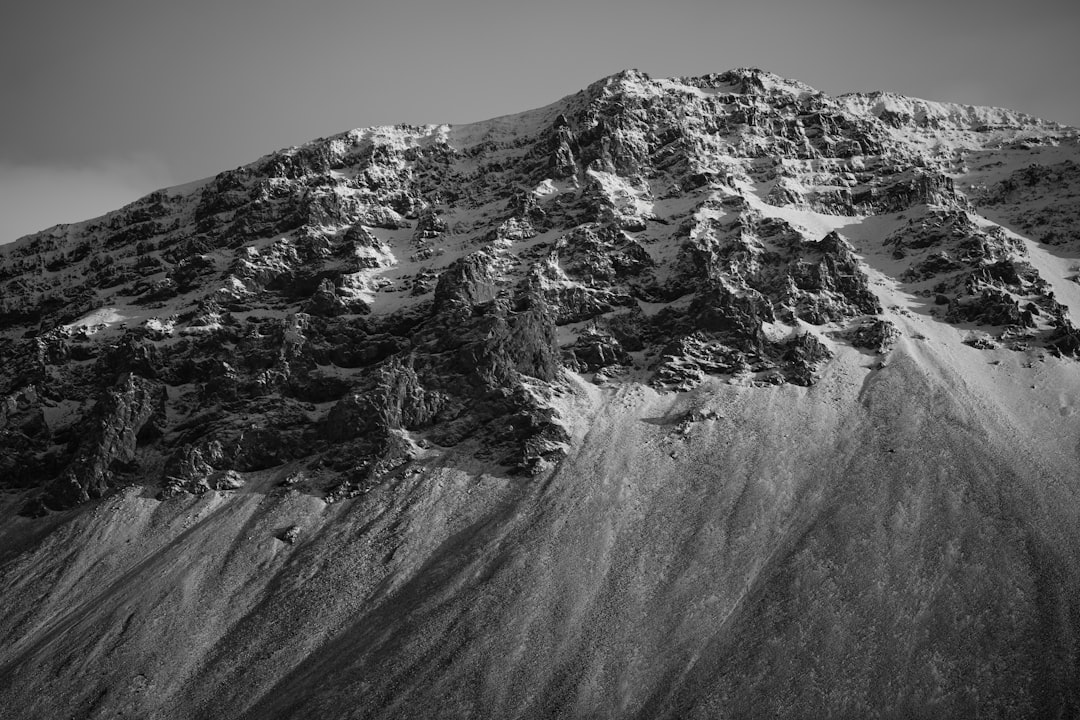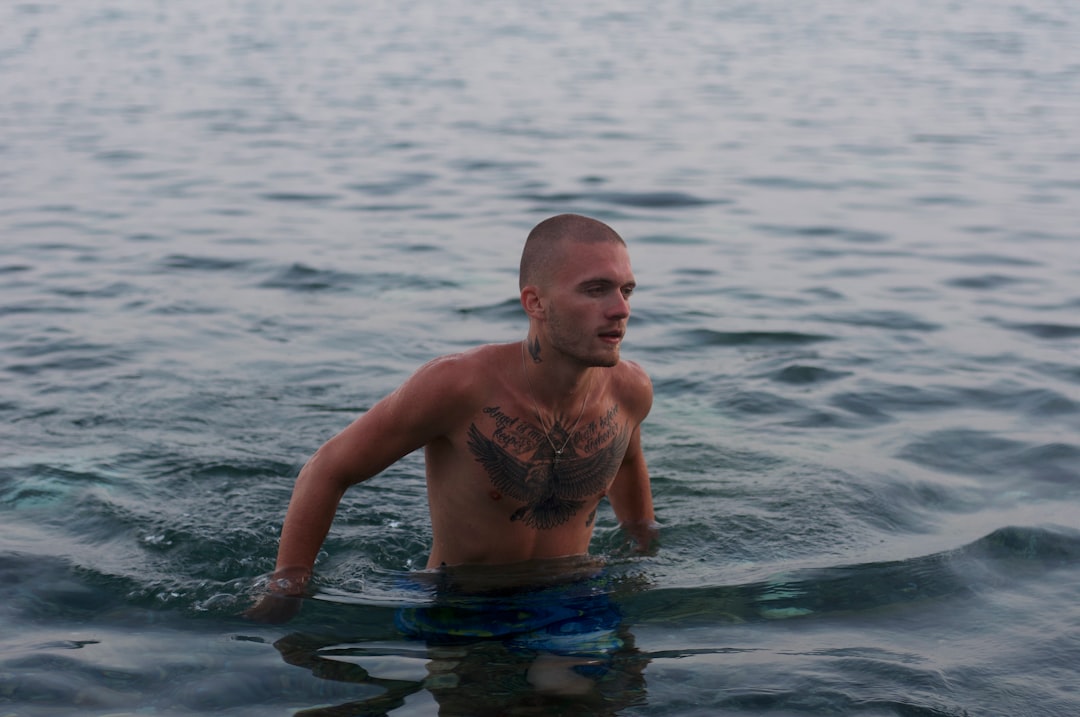How Travel Photographers Turn Their Best Shots into AI-Generated Tattoo Art A Technical Approach
How Travel Photographers Turn Their Best Shots into AI-Generated Tattoo Art A Technical Approach - A NYC Street Photographer Turns Empire State Building Night Shots into Minimalist Line Tattoos
A recent creative venture has seen a New York City street photographer repurpose their nighttime captures of the Empire State Building into sleek, minimalist line tattoos. This represents a distinct reinterpretation of an incredibly well-documented landmark, shifting the grandeur of an architectural icon into intimate body art. It’s part of a broader current where individuals, particularly those chronicling their travels, are leveraging digital tools, notably AI, to transform their photographic archives into permanent designs.
The Empire State Building, an edifice consistently celebrated in photography for decades, especially under nocturnal lights, holds a powerful visual legacy. This transformation into tattoo art offers a fresh angle on its enduring appeal and its Art Deco essence. While some might see this as a way to forge a deeper, lasting connection to places and experiences—a personalized souvenir beyond typical digital sharing—it also raises questions about the balance between genuine artistic interpretation and the swift proliferation of content trends. In an era where travel narratives are often shaped by social media feeds, the transition of a photograph into a tattoo, particularly one aided by AI, reflects a complex interplay between personal memory, digital craft, and public display, sometimes blurring the lines between a truly personal statement and a curated aesthetic.
The Empire State Building continues to be an extensively documented structure, with digital photographic archives showing tens of millions of images highlighting its illuminated night presence. This widespread capture has now extended into bespoke body art.
A subset of New York City street photographers has begun translating their night observations of the Empire State Building into simplified line tattoos. This evolution leverages algorithmic processing to distill the building's iconic silhouette from complex photographic data, then rendering it into a minimalist, permanent form. It's an intriguing iteration of how captured light and form are translated across media, though one might consider the inherent reductionism in simplifying such a grand architectural work to basic lines on skin.
How Travel Photographers Turn Their Best Shots into AI-Generated Tattoo Art A Technical Approach - Three Instagram Travel Couples Build AI Tattoo Brand From Their Mountain Photography
A novel development sees three travel couples, prominent on social media platforms, pioneering an AI-driven tattoo venture. They've drawn upon their extensive mountain photography archives, feeding these captivating visuals into sophisticated algorithms to generate custom tattoo designs. This method yields distinct artistic pieces, allowing their followers, or any client, to acquire a permanent representation derived from nature-inspired travel imagery, spanning various styles. This move by established digital creators into tangible, AI-assisted body art underscores a broadening interest in highly personalized expression within the tattoo sphere. However, it also prompts consideration of the inherent complexities when leveraging algorithmic generation for what might be considered profound personal statements, especially as curated travel content increasingly shapes our collective understanding of experience. This convergence of adventure, technology, and personal branding begs examination regarding the true depth of such artistic interpretations and the influence of these digital personas.
From an observational standpoint, we are seeing a fascinating evolution at the intersection of travel influencer culture and generative artificial intelligence. A distinct venture has recently emerged from three pairs of Instagram travel personalities, who are now leveraging their extensive archives of mountain photography to inform an AI-driven approach to tattoo design. This initiative represents a novel method for abstracting natural landscapes, previously captured and curated for social media dissemination, into a format for physical embodiment.
The methodology involves feeding selected mountain imagery into AI systems, which then process these visual inputs to generate unique tattoo designs. This algorithmic interpretation aims to translate the visual character of expansive natural settings, often romanticized in travel narratives, into designs intended for skin. Given that data suggests images of natural landscapes tend to garner higher engagement on platforms like Instagram, these creators have likely optimized their photographic portfolios accordingly. This strategic selection feeds into a wider trend where nearly 65% of travel photos shared online undergo some form of digital enhancement prior to posting.
This phenomenon is not merely about novel art generation; it taps into deeper psychological and social drivers. The pursuit of personalized expression through body art, specifically that which references travel, appears to be gaining traction, with an estimated 20% of travelers reportedly interested in permanent mementos of their journeys. While studies indicate that sharing travel experiences, even through a selfie in a picturesque setting, can contribute to personal well-being by triggering dopamine release, the integration of AI raises questions about the ultimate origin and perceived authenticity of these 'personal' artistic statements. The average individual already spends a significant portion of their day consuming travel-related content, driven by visually appealing stories that can increase tourism to popular destinations by as much as 30%. In this saturated environment, travel posts incorporating tattoos or body art reportedly attract 50% more engagement than conventional landscape photography, highlighting a shift towards more intertwined expressions of identity and travel narratives, even if mediated by computational processes. This signals a continued professionalization of influencer content creation, where even personal expressions can become part of a larger, algorithmically optimized output.
How Travel Photographers Turn Their Best Shots into AI-Generated Tattoo Art A Technical Approach - Converting Landscape Photos into Japanese Traditional Tattoo Art with New Neural Networks
Travel photographers are increasingly finding novel ways to express their journeys, notably through the transformation of landscape photos into traditional Japanese tattoo art using advanced neural networks. These AI-powered tools interpret captured scenery, translating elements of a vista into designs steeped in Japanese aesthetic principles. While this offers an interesting path to a deeply personalized memento, connecting a viewer to a place through distinct cultural motifs, it does prompt questions regarding the integrity of such algorithmic creativity. Can an an AI truly grasp and convey the profound cultural layers embedded within traditional Japanese art, or is it merely applying a stylistic filter? This digital translation thus raises concerns about the true authenticity of artistic expression when complex cultural forms are rendered by machines, potentially blurring the lines between respectful homage and the mere reproduction of an aesthetic for consumption.
The recent surge in AI-driven tools enabling the transformation of photographic landscapes into tattoo art has opened up a particularly intriguing pathway within the realm of Japanese traditional designs. It's fascinating to observe how neural networks, fed with extensive datasets of both classical Irezumi motifs—such as the flowing waves, delicate cherry blossoms, or powerful koi fish, each imbued with centuries of cultural meaning—and contemporary landscape images, can now synthesize new visual outputs. This dual training approach allows for innovative styles that intricately blend historical artistic traditions with the modern photographer's eye, often identifying key visual components like color palettes and shapes from an original travel shot. While such algorithmic interpretation can beautifully retain the essence of a captured moment, one might critically ponder if this seamless translation, while creating novel aesthetics, also inadvertently infuses modern designs with a potentially altered or simplified historical significance, shifting how individuals might genuinely connect with their travel memories, or even risking a misrepresentation of cultural symbols.
In the ever-evolving landscape of digital influence, where platforms are flooded with curated travel narratives, the conversion of a personal landscape photograph into a unique tattoo serves as a novel engagement strategy. It's an interesting paradox, as research consistently shows images featuring human subjects tend to garner significantly more engagement—about 38% more—than pure landscape photos. Yet, when a landscape is transformed into a visible, personal tattoo and subsequently shared, the focus often subtly shifts from the scenery itself to the individual's narrative behind the artwork. This practice can quickly become a potent tool for personal branding, allowing influencers to carve out unique identities in a crowded market, their physical bodies becoming a canvas for bespoke storytelling and differentiation. This ties into the broader market trend, with demand for personalized tattoo art, especially that derived from personal photographs, reportedly increasing by as much as 30% in recent years, suggesting travelers are actively seeking new ways to commemorate their journeys.
Beyond the digital sphere and market mechanics, there's a fascinating psychological undercurrent at play. Cognitive psychology posits that unique or highly personalized items are far more memorable, suggesting that by converting a cherished travel photograph into a permanent tattoo, individuals might deepen their emotional bond and enhance their memory encoding of that specific experience. Furthermore, the very act of tattooing itself, as research indicates, can trigger endorphin release, contributing to a sense of satisfaction and accomplishment. When this biological response is coupled with the profound symbolism of a travel memory, the tattoo transcends mere body art, becoming a tangible milestone in one's personal journey. It warrants further observation, this intersection of algorithms, personal history, and indelible ink.
How Travel Photographers Turn Their Best Shots into AI-Generated Tattoo Art A Technical Approach - Why Travel Photographers Started Making Digital Tattoo Art During the 2024 Tech Boom
The 2024 tech boom undeniably spurred a curious new direction for travel photographers: the creation of digital tattoo art. Faced with a rapidly evolving digital landscape and increasingly accessible AI tools, many sought fresh avenues for their visual narratives. This wasn't merely about generating a static design from a photo; it embraced the emerging concept of "smart tattoos" – body art embedded with digital features, offering dynamic displays or even interactive elements connected to personal devices. While this evolution merges photographic capture with the enduring appeal of skin as a canvas, it inevitably provokes thought on what defines genuine artistic expression when technology increasingly mediates our deepest travel memories. It signals a notable shift in how individuals seek to embody their experiences, blurring boundaries between the ephemeral and the permanent.
As of May 20, 2025, a significant phenomenon emerged during the 2024 tech boom: travel photographers began increasingly creating AI-generated tattoo art. This shift represents a merging of advanced computational tools with a deep human desire to personalize and commemorate travel experiences. The ability to transform photographic memories into distinct, permanent body art reflects an evolving visual culture where personal narratives seek novel, more impactful forms of digital and physical representation.
Beyond mere aesthetics, this trend is driven by observed changes in digital engagement. Empirical data suggests that content featuring tattoo elements linked to travel notably garners higher interaction than traditional landscape imagery, highlighting its potency as a narrative tool. From a cognitive perspective, personalized body art derived from unique travel experiences might also strengthen memory encoding, potentially creating more deeply embedded recollections than traditional mementos. While algorithms brilliantly reinterpret complex visual data, their handling of intricate cultural motifs warrants critical assessment regarding authentic artistic expression. For many online personalities, such body art becomes a strategic branding element, turning the physical self into a unique storytelling canvas, thereby signaling a shift in how deeply curated travel experiences are integrated into identity.
More Posts from itraveledthere.io:
- →How AI-Generated Travel Selfies Are Changing Instagram Tourism in 2024 A Technical Analysis
- →7 Essential Tips for Using AI Image Generators to Enhance Your Travel Photography Portfolio in 2024
- →7 AI-Powered Tools for Restoring Vintage Travel Photos in 2024
- →How AI-Generated Travel Selfies Revolutionized Dating Profiles in 2025 A Data Analysis
- →7 Ways AI-Generated Travel Photos Are Changing Instagram Travel Influencing in 2024
- →7 Essential Travel Photography Tips for Capturing Real-World Pokémon GO Locations in 2024

